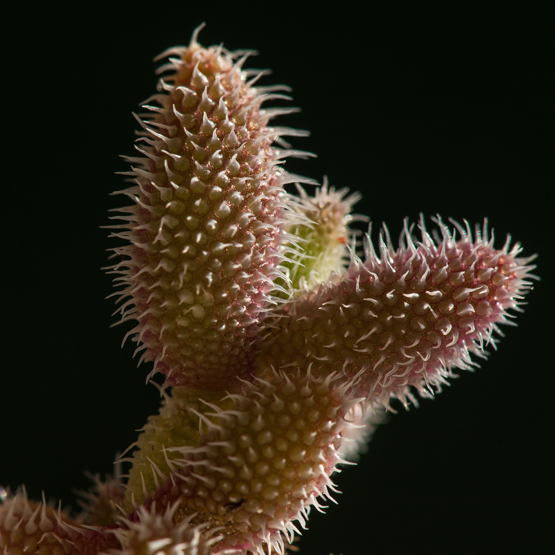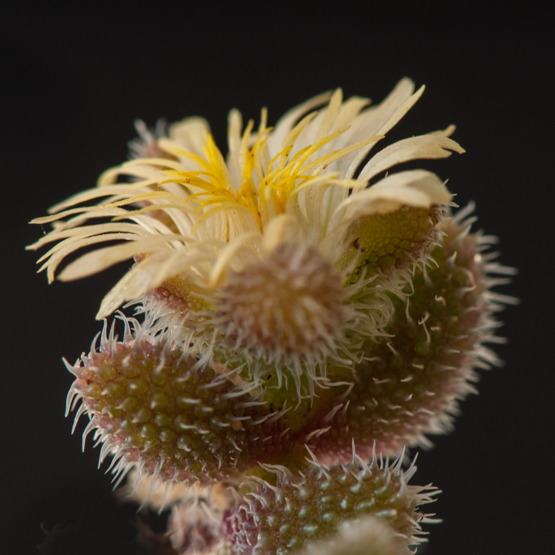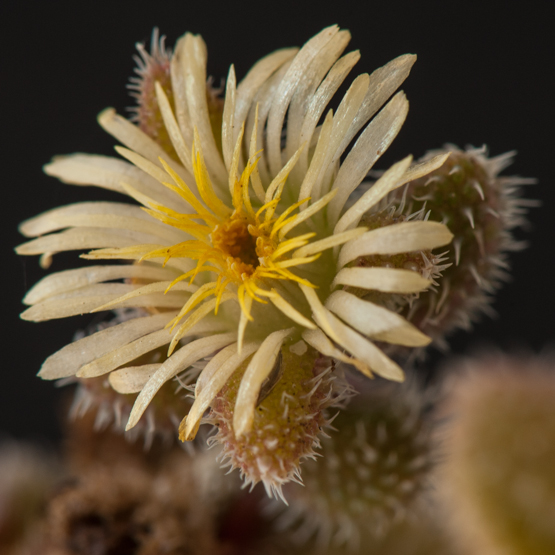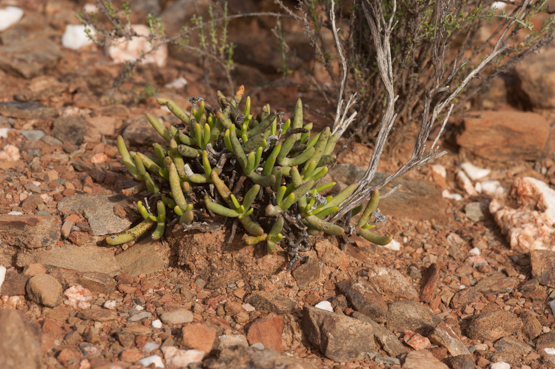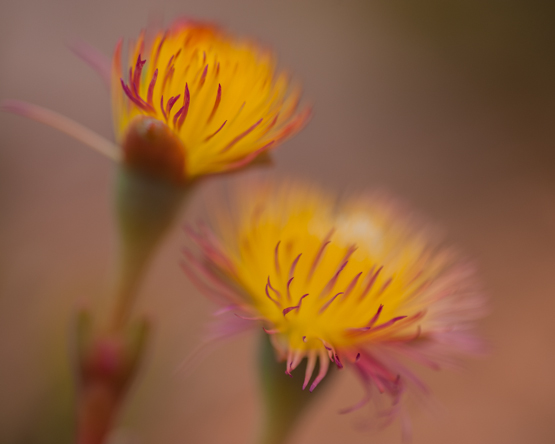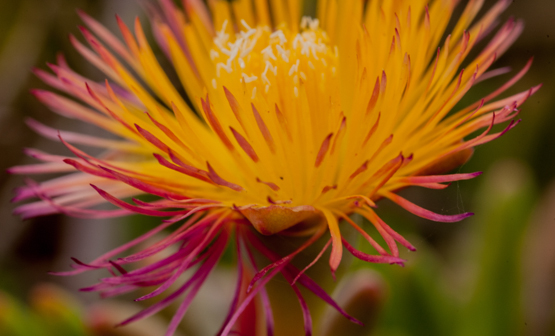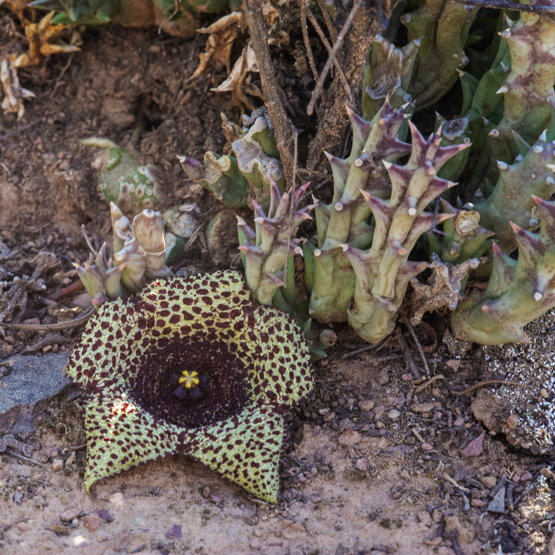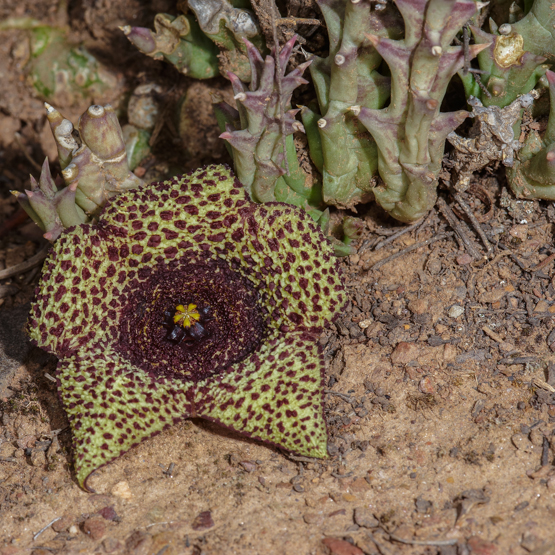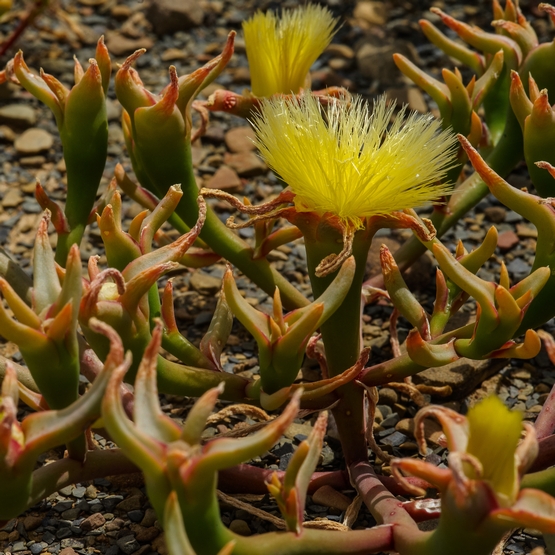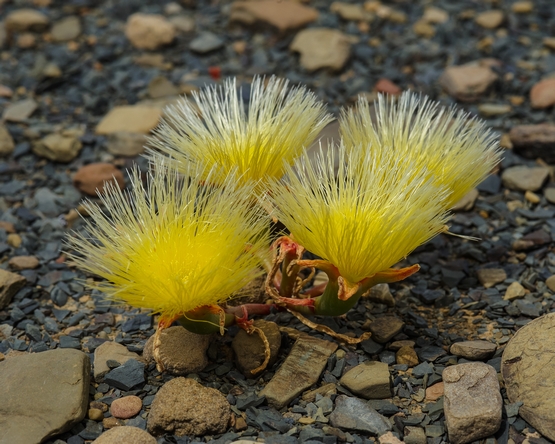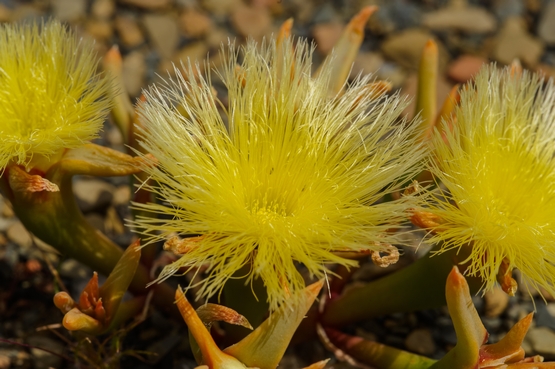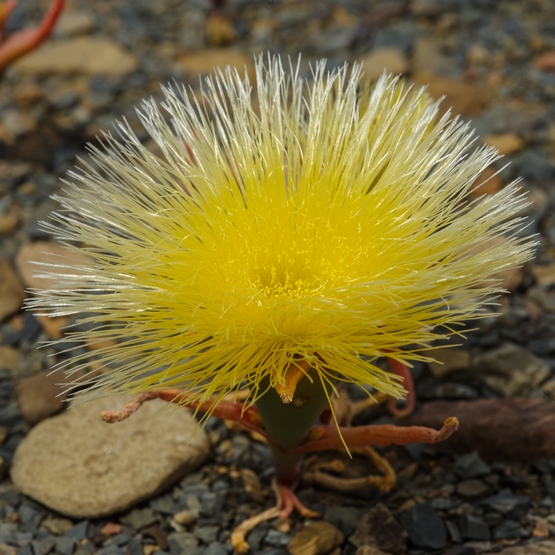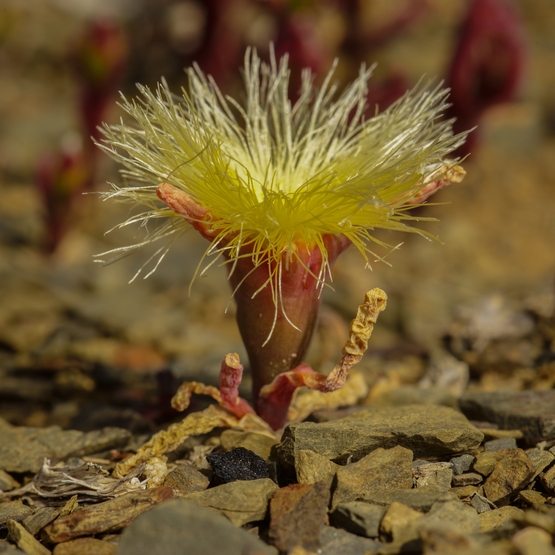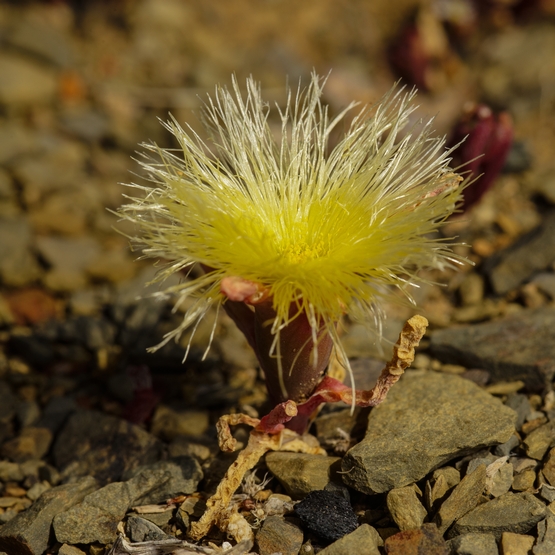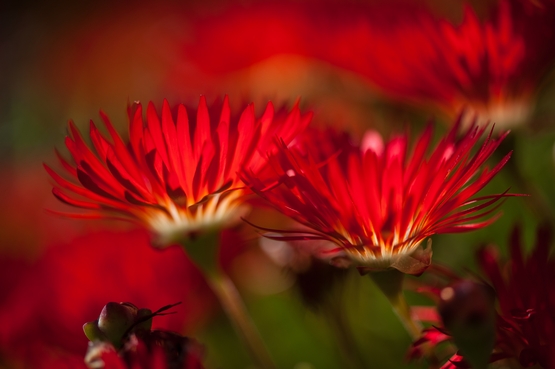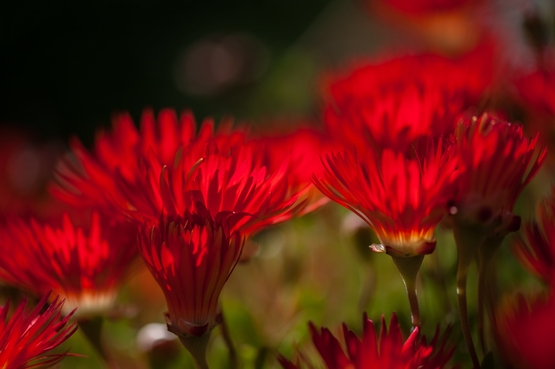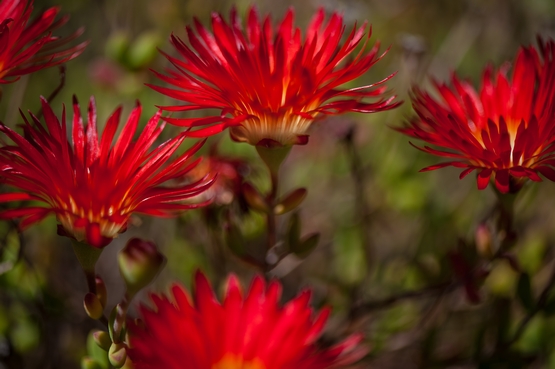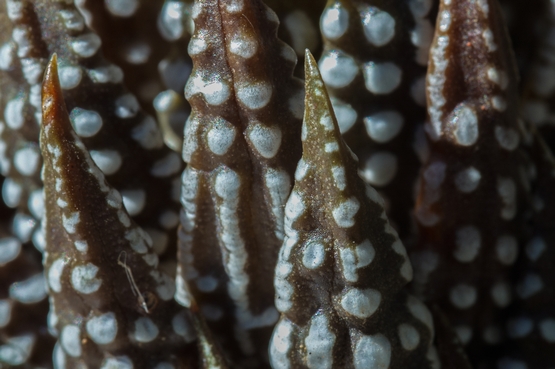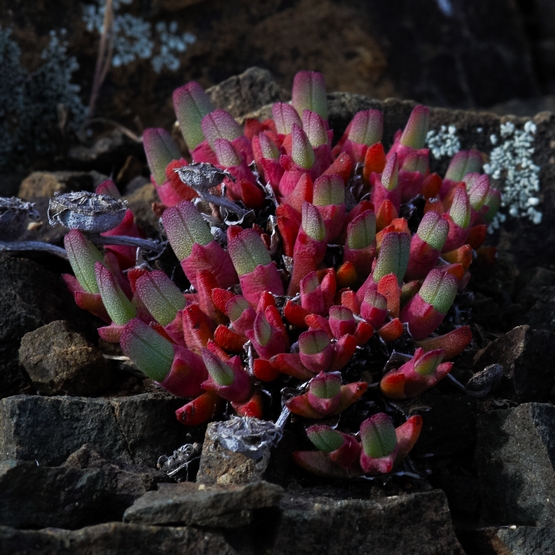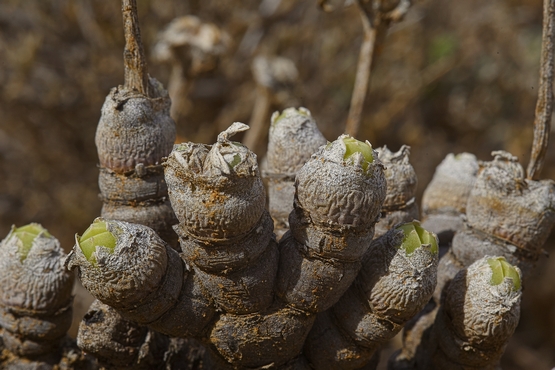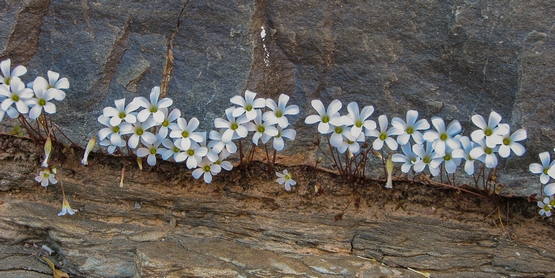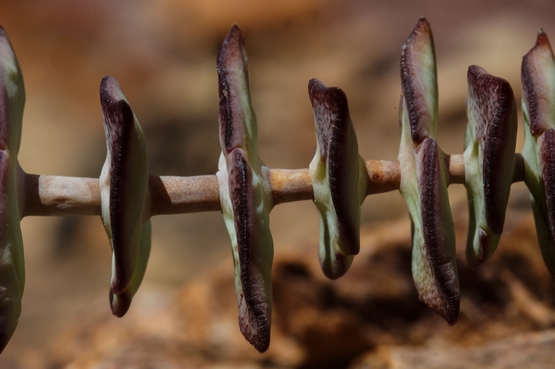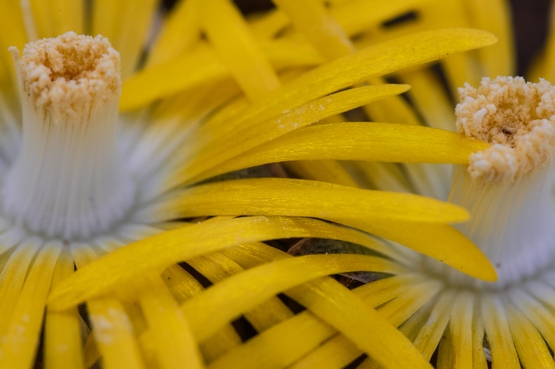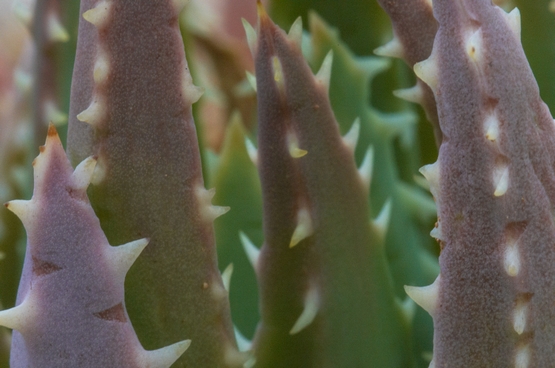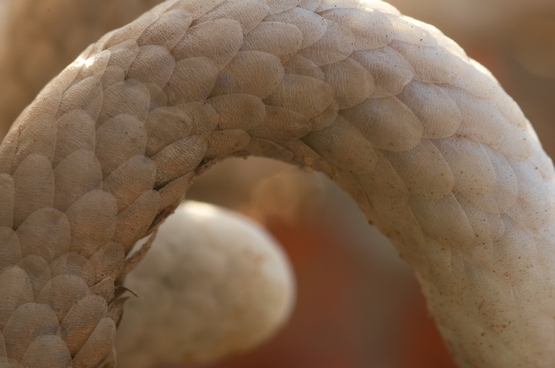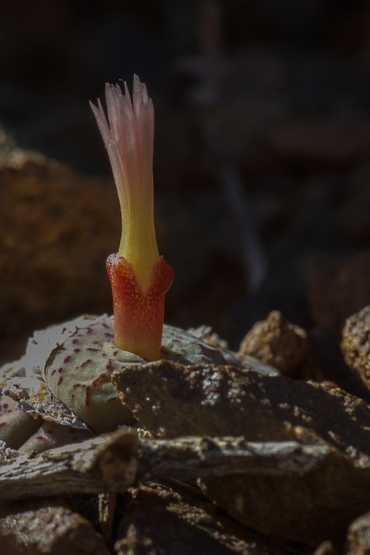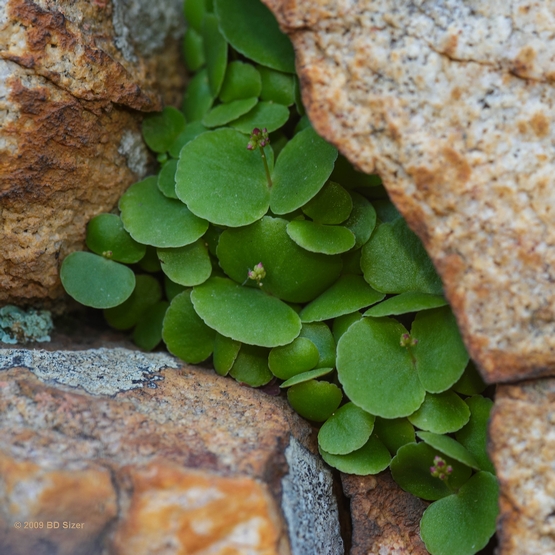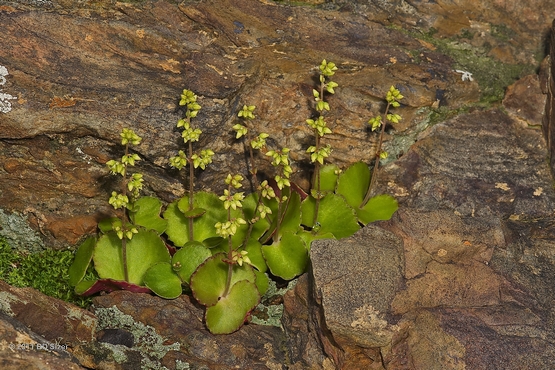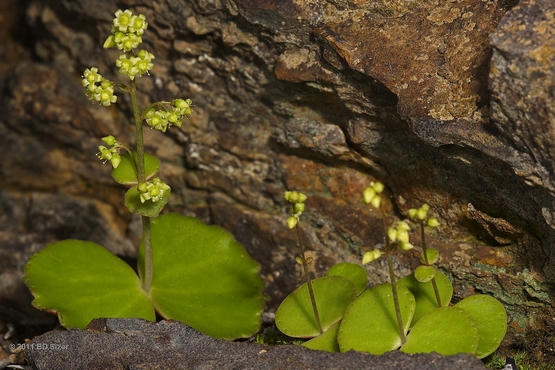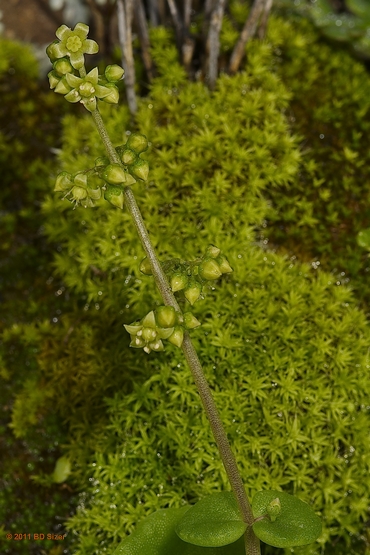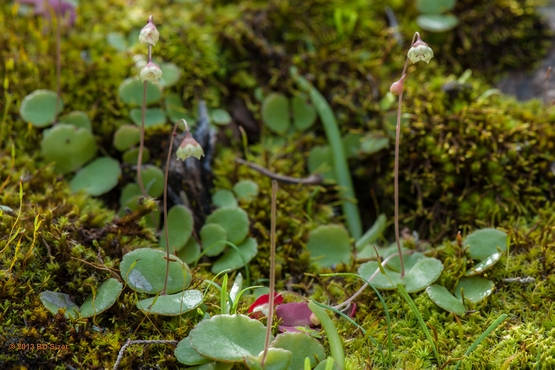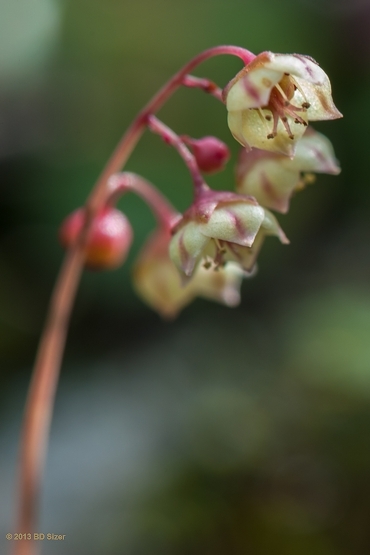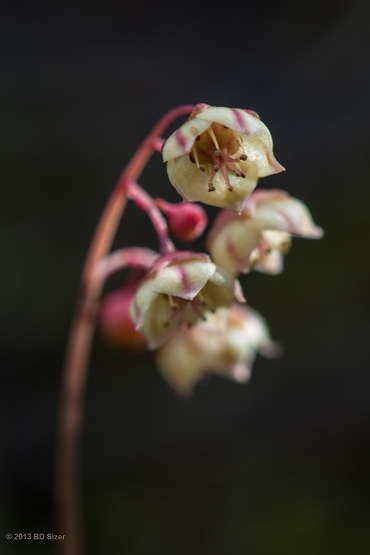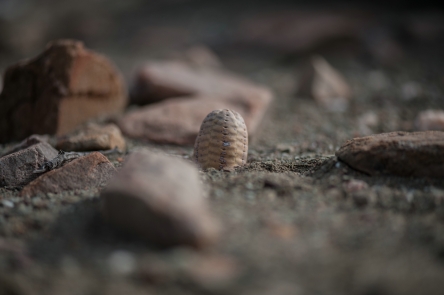I made these pictures a few days ago, as part of a presentation on plant photography I have to give at the end of the month.
Category: photography
Hereroa odorata
Not many people will get excited, I suppose, by a plant like the one in the first picture.
But when you see the flowers you might well change your opinion. The first two pictures below seem to be exactly the same. In fact there is a small but not unimportant difference: the first of them was taken with the lens wide open (F2.8), whereas in the second one a smaller aperture was used (F11). To me the first of the pair has a rather more dream-like atmosphere. What do you think?
In the last one the camera was tilted to give a better view of the beautifully coloured outer petals.
In all species of Hereroa the flowers open in the afternoon or even later. (The pictures were taken at about 5 pm).
Orbea verrucosa
According to the literature, this species occurs from just west of Oudtshoorn in the Western Cape to the Kei River in the Eastern Cape.
The pictures shown here however, were taken not fear east of Ladismith, extending the known distribution area 70-80 km westwards. The plants grow here in one of their typical habitats: on dry stony slopes among small bushes.
When you have a close look at the first two pictures, you will see that they are almost identical – but one is taken with ambient light and the other with flash. Can you see which is which and do you have a preference?
Flowering plants photographed 24 March 2011; plant in fruit: 1 November 2012
Playing with light
Strange though it may sound, up to yesterday I never managed to make a decent picture of a fully open Anacampseros telephiastrum flower.
Yesterday afternoon I went out to Kanonkop (Cannon head), a rocky outcrop overlooking Montagu. Although I did not find what I had hoped to see, there were several other interesting plants, including a lot of flowering Anacampseros telephiastrums. In fact I have never seen so many plants of this species together in one spot. The flowers appear in November and December; they only open late afternoon (the pictures were made at about quarter past four).
For the first picture I just made a photo of what was in front of the camera. The result was not really exciting, to put it mildly.
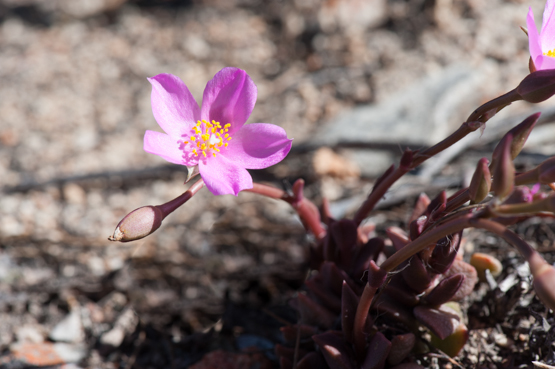
For the second one I positioned my camera bag in such a way that it shaded the background. Because of the great contrast in light between the flower and the dark background, the flower was totally overexposed.
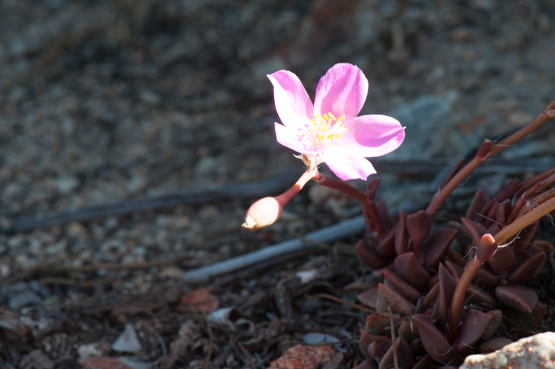
When I took the same picture but with one stop underexposure (and somewhat more close up) the result was as follows.
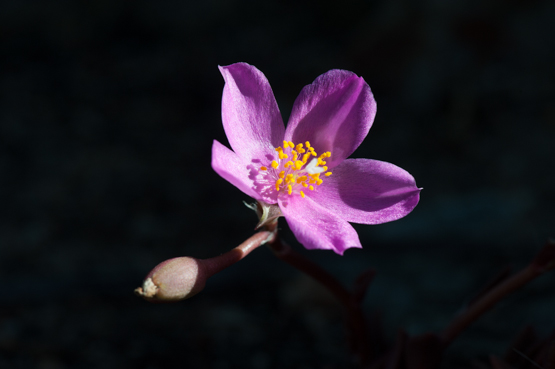
This was the basis for the last picture, which was enhanced in post production by lowering contrast and highlights and raising the clarity, combined with a bit of cropping.
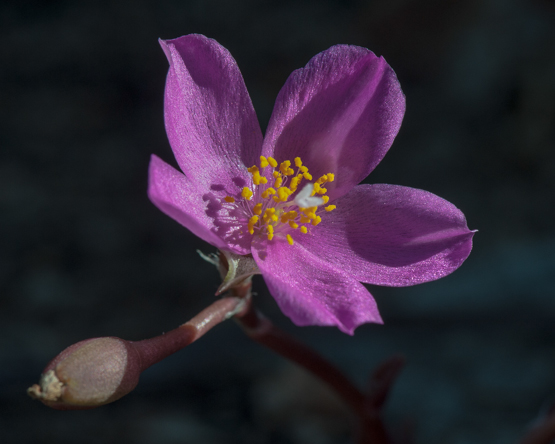
Mesembryanthemum eurystigmatum (2)
When you look carefully at the following three pictures, you will see that the plant here is reduced to just a flower. As long as this is able to close the circle from seed to seed all is fine. These are annual plants, remember.
The last two pictures are basically the same. The first of the two shows a bit of the background as well, whereas in the last one the camera was tilted a bit downwards, so that attention is focused completely on the flower. I cannot really say one picture is better than the other; it depends on what story you want it to tell.
Drosanthemum speciosum, seen with different eyes
Yesterday I showed you some documentary type of pictures.
Confronted with all these beautiful flowers, it was clearly a waste of opportunities to not have another and different look at them. Although we talk about looking at things with different eyes, in reality we should call it looking with a different (part of the) brain.
In a case like this I usually have to take a deliberate decision to let the right hemisphere of my brain take over.
Once you are in that mode, it is sometimes difficult to stop; it is almost like being in a feeding frenzy. Anyway, I came home with a lot of pictures , many of which were very similar. This to me is one of the beauties of digital photography: the fact that there is no need to restrict yourself to taking a few pictures. Mind you, I’m not endorsing an attitude of just mindlessly taking lots of snapshots hoping that some of them will turn out right. (Recently I saw that nicely described as “point and pray”). But I do think that often it is good to “go with the flow”.
Below you will find a couple of pictures that for one reason or other seem worth showing to you.
The first three pictures give a general idea of the abundance of colour in these flowers.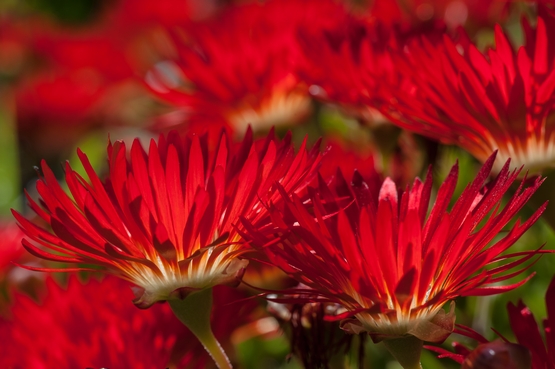
The second pair shows a more deliberate approach. It’s a case of ” can you spot the difference(s)? “.
I found the old fruit in the first picture a bit disturbing, so I removed it before taking the second one. On reflection, I think that the fruit adds interest to an otherwise somewhat empty space in the picture. The fact that it also gives some extra information seems to me less important in this kind of picture.
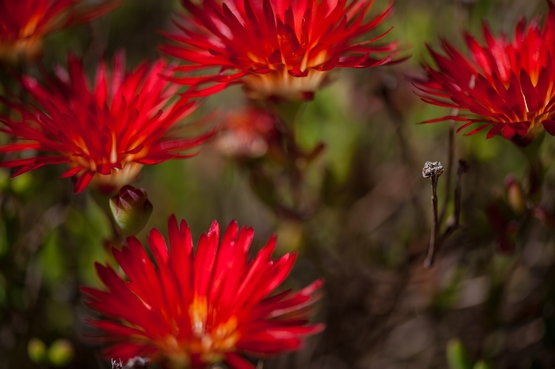
The next photo was slightly cropped in post production, resulting in a very balanced image. For some of us probably even a bit too balanced and formal.
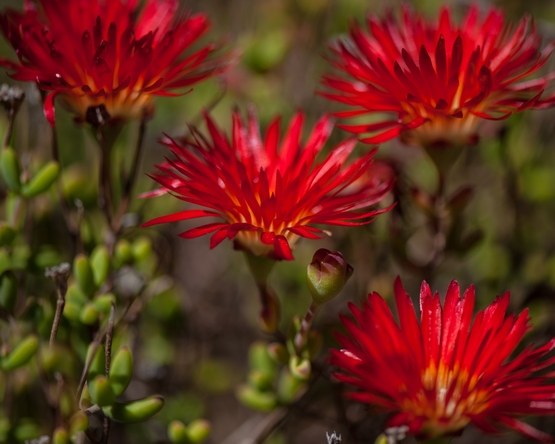
We end with a picture that I like because of the cheeky way a few of the petals refuse to follow the general pattern.
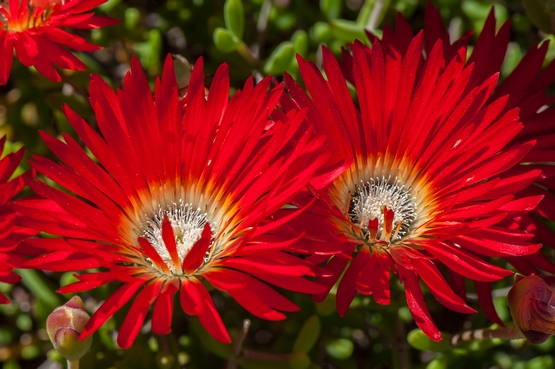
Lied ohne Worte 2
Lied ohne Worte 1
Crassula umbella
This is a member of an interesting little group of tuberous Crassulas. It occurs from the Richtersveld to the Little Karoo, usually on south-facing (shadowy) slopes under shrubs and especially under overhanging rocks.
The flowers appear in July to September and are described as star-shaped and white to yellowish green.
That is exactly as I always saw them in the wild, so that was the image that was imprinted on my brain.
A few weeks ago my wife and I went for a short drive in the area and to the northeast of town I found quite a few plants that looked like C. umbella but with rather different flowers.
The plants clearly belonged in the same group as C. umbella, so I looked up the relevant descriptions, but none of them fitted.
Obviously I had been to hasty, for when I started to reread the descriptions the problem was soon solved. The Flora of Southern Africa, vol. 14, by H. R. Toelken, says : “C. umbrella is a very variable species with several local forms ………………………………….
3. From Montagu westwards to near Worcester plants tend to have ovate corolla lobes with an acute to acuminate apex and slightly longer squamae. The somewhat larger flowers are cup-shaped and usually more or less turned downwards.”
As the following pictures show, this description fits the plants near Montagu to a T.
For the last picture I moved the camera slightly to get a darker background, so that the beautiful little flowers stand out better.
Depth of field and atmosphere in plant photography
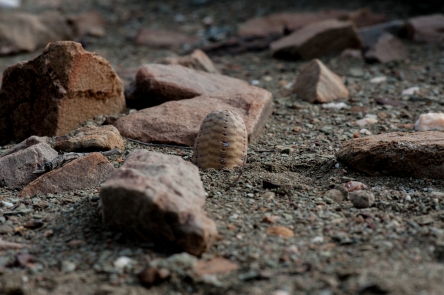
As a rule I use a diaphragm of f/16 when photographing plants, because it usually gives the best combination of sharpness and Depth of Field. After taking this picture of Euphorbia pseudoglobosa last Sunday, I wondered what the result would be if I used the lens’s full opening. The result is shown below. Both pictures have their merits, but to me the second one is more interesting as it imparts a brooding atmosphere and a feeling of loneliness. I would be interested to hear your opinion.
